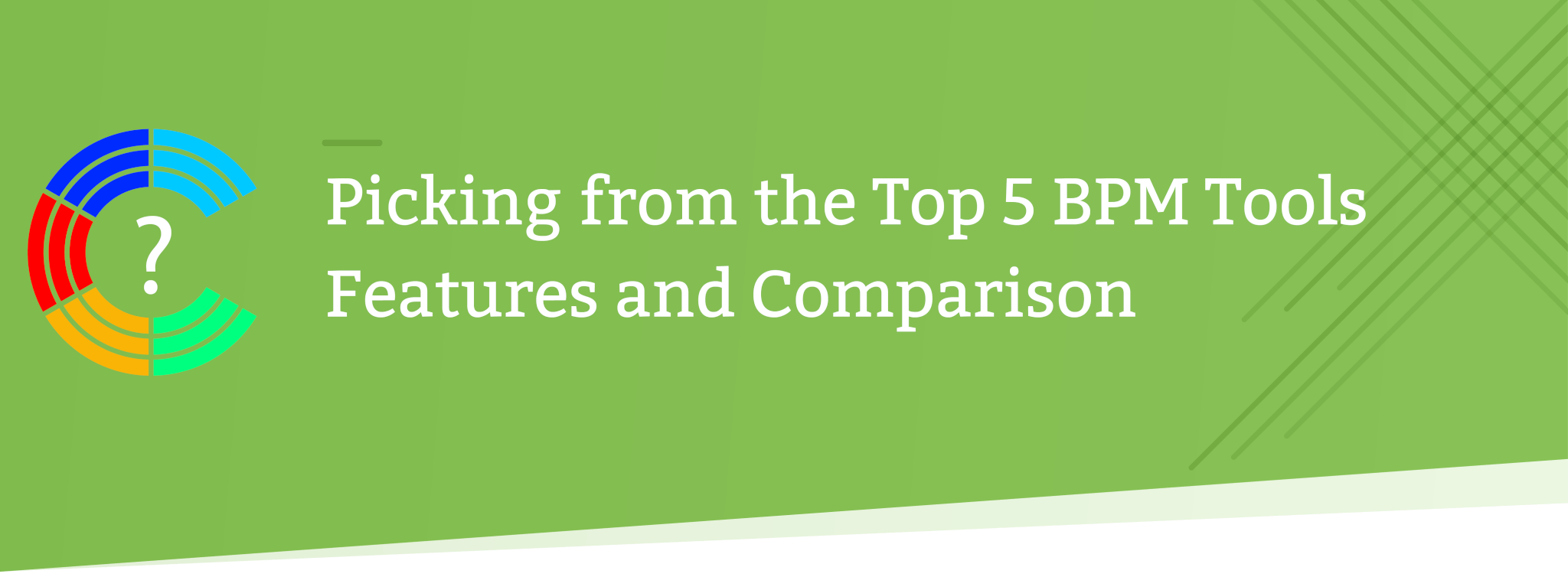
Business Process Management Software (BPMS) can be an essential tool for any business, big or small.
BPM tools allow you to get the very best benefits out of process management, such as increased productivity, lower costs, and improved business agility.
Specifically, the software helps document processes, streamline and automate workflows, manage form approvals, and so on.
With the number of software solutions available on the market, though, picking the right one can be hard. Making a mistake here can be very deadly – a lot of the providers can cost more than 6-figures and take months to really start using.
So you really need to find the BPM tool that’s going to work for your business, and not just sit around unused. That’s the equivalent of paying 6-figures for a treadmill and just keeping it in the garage…
“Maybe I’ll get around to using it. Maybe next month?”
To make sure you get the most out of BPM, we’re going to give you a primer on how to pick the right tool for your business.
How to Use This Guide
- Are you still on the fence about whether or not BPM is for you? Learn about how BPM can help your business.
- Wondering how to pick the right tool? Check out the 3 must-have features for every modern BPM software.
- If you’ve already identified the features you’re looking for, though, skip ahead to our comparison of the top 5 BPM tools.
Why BPMS? Top 3 Use-Cases
Every organization has its processes. Business Process Management software helps you standardize, improve, and automate them.
Here’s how and why that matters.
Process Standardization
If you’re a fan of continuously improving your processes, you should have one best practice of carrying out any given process.
The issue, however, is making sure that everyone follows it.
You have to constantly double-check on your employees, making sure that they’re doing everything the right way. This can end up incurring a lot of managerial overhead.
Business process management software is a central hub for managing all your processes. Instead of personally letting your employees know about process changes, you can just make some edits within the software.
This way, the system will send out a notification to all your employees about the changes. Then, it will automatically enforce the new process rather than the old one, taking a big chunk of work off your hands.
Process Improvement
Are your business processes as efficient as they can possibly be?
More often than not, the answer will be “no”.
To really get the most out of your business, you should be constantly focused on finding potential improvements for all the small processes.
BPM tools can be a priceless asset for this. They detect bottlenecks, inefficiencies, as well as missed deadlines. This gives you a good idea of what to improve.
Process Automation
There are several ways BPM tools can help with process automation.
The most basic function here is facilitation. Without software, you need to manually let everyone know whenever their process step comes up.
BPM software does this for you – whenever it’s time for someone to carry out a process step, they get a notification within the software.
On a similar note, whenever there’s a problem with the process, such as a high chance of a missed deadline or bottlenecks. The software can automatically let the right people know about it.
If the BPM software you’re using also offers business process integration capabilities, you can also use BPM to automate data transfer.
So, let’s say you finish a process of hiring an employee. You’ve gathered the employee data for within the process, such as their name, phone number, role, etc. With BPM software, you can automatically transfer it to all the other systems you use.
3 Must-Have Features For Modern BPM Tools
Today, BPM software solutions are dime a dozen. Most of them offer the same features – BPMN 2.0 modeling, training on how to use the software, cloud-based system, etc.
The following 3 features, however, are much rarer – they’re what sets apart the great BPMS from the good.
Drag & Drop Process Design
For the past decade, BPMN was the norm for process design. It’s a standardized method for modeling your processes – instead of everyone creating different workflow diagrams, you just follow this one specific methodology.
The reason for this is to have everyone on the same page – your employees, management, and process consultants.
Hence, most BPM tools started using BPMN for the process design part of the software.
There is, however, one big downside with BPM – it’s very hard to learn. A lot of BPM providers offer specialized training to address the issue. This, however, only adds to the time required to really learn how to use the software (which can mean even more expenses).
If you’re mainly using Enterprise software, BPMN is unavoidable. Most Enterprise BPM software solutions, the ones that offer integrations with other enterprise solutions, are based on the standard.
There is, however, a way around it.
Modern process management software companies are moving away from BPMN and developing their own proprietary methods for process design.
This allows you to start using the software right after registration, with zero training or prior experience required.
Integration Capabilities
To get the most out of BPM tools, you should integrate them with all the other software you use.
By having all of your systems work together, you’re allowing for a lot more automation.
With integration, you can do…
- Process Triggers – An event happening in a certain system triggers the process in your BPM software. So for example, an applicant hired through HRM software can trigger the employee’s onboarding process.
- Data Pull – Data transfer from another system to BPMS, allowing for process participants to use it in a given step.
- Data Push – Once the process is completed, you might want to record certain data on a third party platform. The “push” function allows this to be done automatically once the process is finished.
For BPMS to allow for these functions, though, the software should come with inbuilt integration capabilities.
Depending on the software provider you choose, integrations can either be extremely simple or complicated.
There are 3 different types of BPM integrations…
- InBuilt – The software allows for integrations with specific 3rd party apps. The downside with this is that the options are usually very limited.
- Integration-Friendly – Certain BPMS can be used with Integration-as-a-Service providers, such as Zapier. This allows you to integrate it with most other SaaS solutions.
- REST API – This is the most common option for Enterprise BPM software. There’s no inbuilt integration, so you have to manually use the software API to make the software work with other systems. This option, however, requires back-end developers with specialized know-how.
Reasonable Price Tag
While this one’s not exactly a feature, it’s something that really differentiates most BPM tools.
The price for the software can range from anything between 15 to- 1,000 USD / User / Month. The full package of certain tools can cost somewhere in the range of 6 figures if you factor in installation, training, integrations, and so on.
There is, however, no golden rule about the pricing. It really depends on your business needs.
If you’re an enterprise, for example, that requires the BPMS to integrate with your ERP, then there’s no cheap option to go for.
If you’re a medium-to-large sized organization, though, you’re better off going with the most cost-effective option: best user experience and capabilities for the lowest price.
Picking from the Top 5 BPM Tools
Now that you know how to evaluate BPM tools, here are the top 5 software solutions on the market (and how they differ in terms of functionality).
| Tallyfy | Appian | Nintex | IBM BlueWorks Live | Bizagi | |
|---|---|---|---|---|---|
| Popular With | SMBs, Mid-Large Companies | Enterprises | SMBs, Enterprise | Enterprise | SMBs, Enterprise |
| Process Design | Web-Based Drag & Drop | BPMN2 | Web-Based Drag & Drop | BPMN2 | Bizagi BPMN Modeler |
| Usability | Intuitive, No Training Required | On-Site Training Teams | Remote & On-Site Training Providers | Online Courses | Remote & On-Site Training. Online Courses |
| Installation | Cloud-Based. Instant Registration | Cloud-Based + On-Site. Registration Request | Cloud-Based + On-Site. Registration Request | Cloud-Based + On-Site | Cloud-Based + On-Site |
| Integrations | Open REST API & 3rd Party Integration Through Zapier | Manual (Through Appian Engineers) | With Specific Software Solutions | Open REST API | With Specific Software Solutions |
| Monthly Pricing | 15 – 30 USD / User | 90 – 180 USD / User | Quote-Based | Quote-Based | Quote-Based. 800+ USD / User |
Getting Started with BPMS
Once you’ve identified the BPM tool you’re going with, don’t be afraid to play around with it. Some of the business process management software providers offer free trials. So, you don’t even have to make a major investment before you’re sure that the software works for you!
Setting up BPMS for your organization, though, is just the first step in the process of adopting the tool.
You need to actively use the software to analyze, improve, and automate your business processes in order to get all the potential benefits BPM tools offer.
Related Questions
What is a BPM tool?
A BPM (Business Process Management) tool is a software which helps companies to manage their processes and become more efficient. Consider it a digital conductor, conducting all the interactions and processes in a company. These resources help businesses map, analyze and streamline operations so you can sail from start to finish.
Which is the best BPM tool?
Even if there is such a thing like the “best” BPM tool, it is simply a matter of taste -everyone has his flavor, and a question of what do you want to use it for! Then there’s Tallyfy, Kissflow and Appian that standout as alternatives. For example Tallyfy stands out with its easy to use interface and robust automation capabilities. That is the trick: Finding the tool that is the perfect fit for the internal size and complexity, and the goals of the organization.
Is Jira a BPM tool?
Jira is largely project management inspired work management tool which isn’t real BPM system. More like a Swiss Army knife for software development teams. Jira is great for issue tracking and managing agile projects, but it doesn’t have the holistic process modeling and automation capabilities that BPM solutions do. Consider Jira as a one-trick tool, whereas BPM is more of a universal workflow wizard.
What is a BPM tool for business rules?
A business rules BPM tool is sort of a virtual rulebook, a system that seriously automates decision-making. With these toolkits companies can define, model, and automatically enforce complex business processes without getting mired in code. For instance, Tallyfy’s decision tables functionality allows you to set up complex rule engines that organically steer workflows according to defined conditions, making for repeatability and less human error.
What is the difference between BPM and BPMS?
In other words, BPM (Business Process Management) is the method and strategy that is used in organizing a company’s processes and BPMS (Business Process Management Suite) is the tool that allows enterprises to do so. “You can think of BPM as the recipe and BPMS as the kitchen appliances.” BPMS offers the software for modeling, automating and optimizing processes, which allow putting BPM theories into action and getting tangible results.
What are the benefits of BPM tool?
BPM platforms are productivity superheroes for enterprises. They simplify operations, decrease errors, improve efficiency. Think about slicing through red tape with a laser – that’s what BPM tools accomplish. They are transparent and can expose the bottlenecks and improvement opportunities of processes. And they empower employees, freeing up time to do more valuable things than boring, manual labor. The result? Happier customers, reduced costs, and a more nimble organization prepared to face any challenge.
What are the key components of a BPM tool?
A powerful BPM tool is the businessperson’s Swiss Army knife for business processes. Elements usually include process modelling (to provide a visual diagram of how workflows function), automation engines (to carry out tasks without human involvement), analytics (to quantify and improve performance) and integration (to hook up with other business systems). Some, such as Tallyfy, also provide collaboration, mobile and customizable dashboard, among other bells and whistles. These elements combine into a robust system capable of moving and bettering processes around the business.

